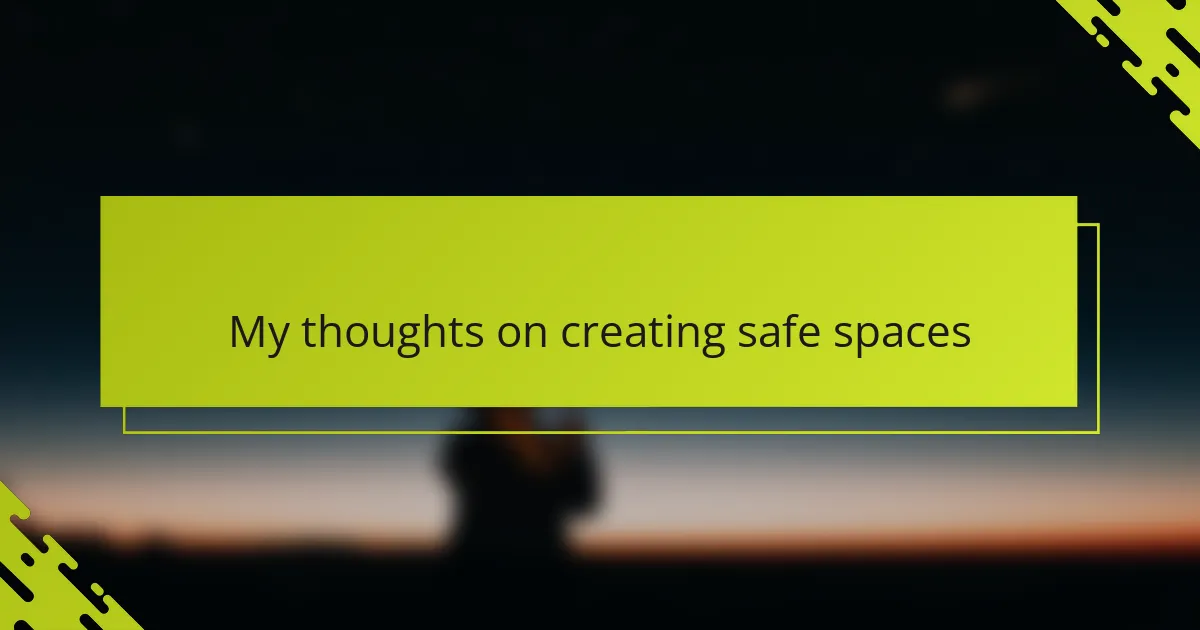Key takeaways
- Safe spaces provide essential environments for individuals to feel accepted, validated, and empowered, fostering authentic connections and personal growth.
- Trust, respect, and intentionality are key elements in creating and maintaining safe spaces, helping individuals to feel secure and valued.
- Challenges such as external societal pressures and internal biases must be actively addressed to ensure inclusivity and safety for all members.
- Strategies like active listening, community-driven guidelines, and ongoing education are crucial for fostering inclusivity and maintaining engaging, supportive environments.
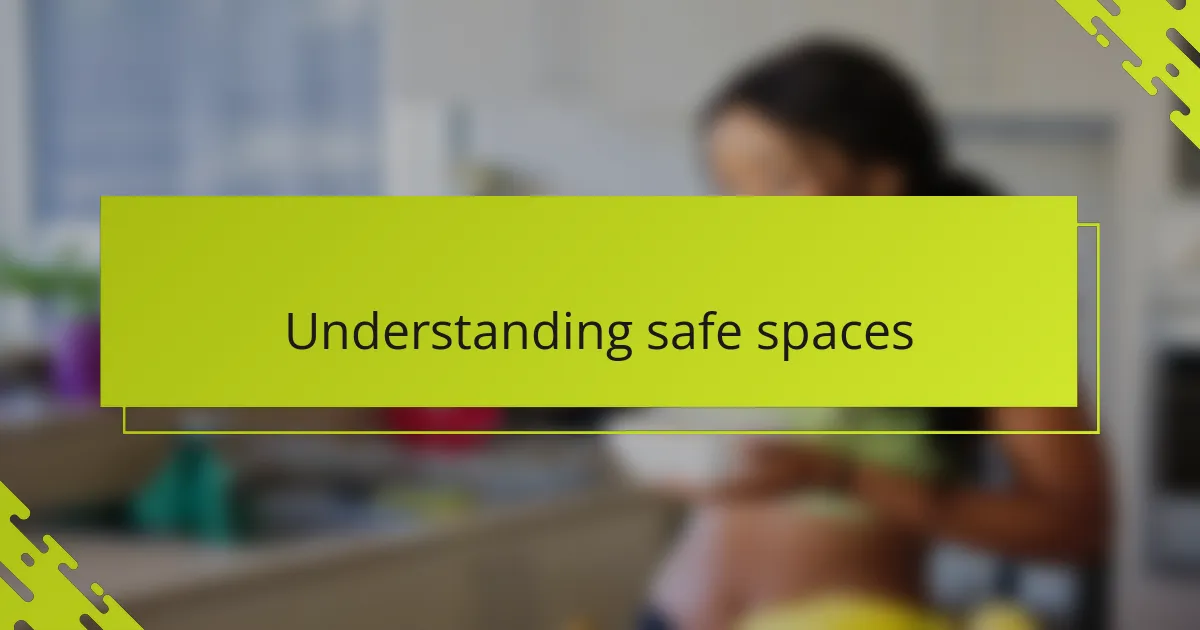
Understanding safe spaces
Safe spaces, to me, are more than just physical locations—they’re places where we can truly exhale, where the weight of judgment lifts even if just for a moment. Have you ever noticed how being in such an environment changes your entire demeanor? It feels like your authentic self is not just accepted but welcomed.
Reflecting on my own experiences, I remember the first time I walked into a room specifically labeled as a safe space for queer women. The cautious hope I carried turned into relief as smiles met me, and conversations flowed without hesitation. That feeling of immediate belonging—it’s transformative and deeply healing.
But what does it really take to create these spaces? Is it simply about rules or guidelines, or is it the intention behind every interaction and the collective responsibility to nurture trust? I believe safe spaces thrive when they’re built on empathy and genuine respect, allowing everyone to feel seen and valued.

Importance of safe spaces for queer women
There’s a profound need for safe spaces because queer women often navigate a world filled with misunderstanding and prejudice. I’ve felt that isolation firsthand—like carrying a silent burden—and safe spaces offer a breath of fresh air where that burden eases, even if just briefly.
Why do these environments feel so essential? For me, it’s because they provide not just acceptance but validation. In these spaces, I’ve witnessed conversations where fears are met with compassion and experiences are honored without skepticism; it’s an empowering exchange that rebuilds confidence.
Sometimes I wonder how different life would be without such places. Would I have found the same strength to embrace my identity, or would the absence of support have dimmed that light? These reflections remind me just how critical safe spaces are—not only for our well-being but for our very survival.
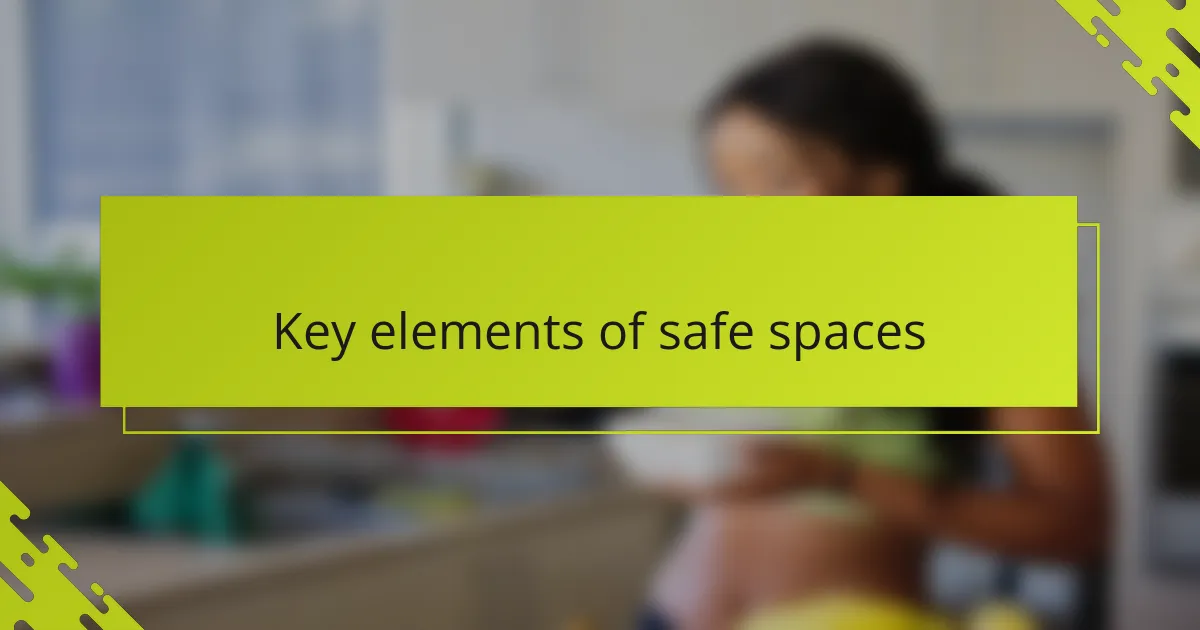
Key elements of safe spaces
Trust is the cornerstone of any safe space. From my experience, when people feel they can share without fear of judgment or exposure, walls come down and connections deepen. Have you noticed how simple acts of listening with intent can transform an environment?
Respect goes beyond polite behavior; it’s an active practice. I remember a gathering where everyone consciously avoided assumptions about each other’s identities or experiences. That mutual mindfulness created a quiet but powerful sense of belonging.
And then there’s intentionality—the clear, shared commitment to uphold safety and care in every interaction. Without it, even the most well-meaning spaces can falter. I often ask myself: how can we maintain that steady commitment when challenges arise? The answer, I believe, lies in ongoing dialogue and collective accountability.
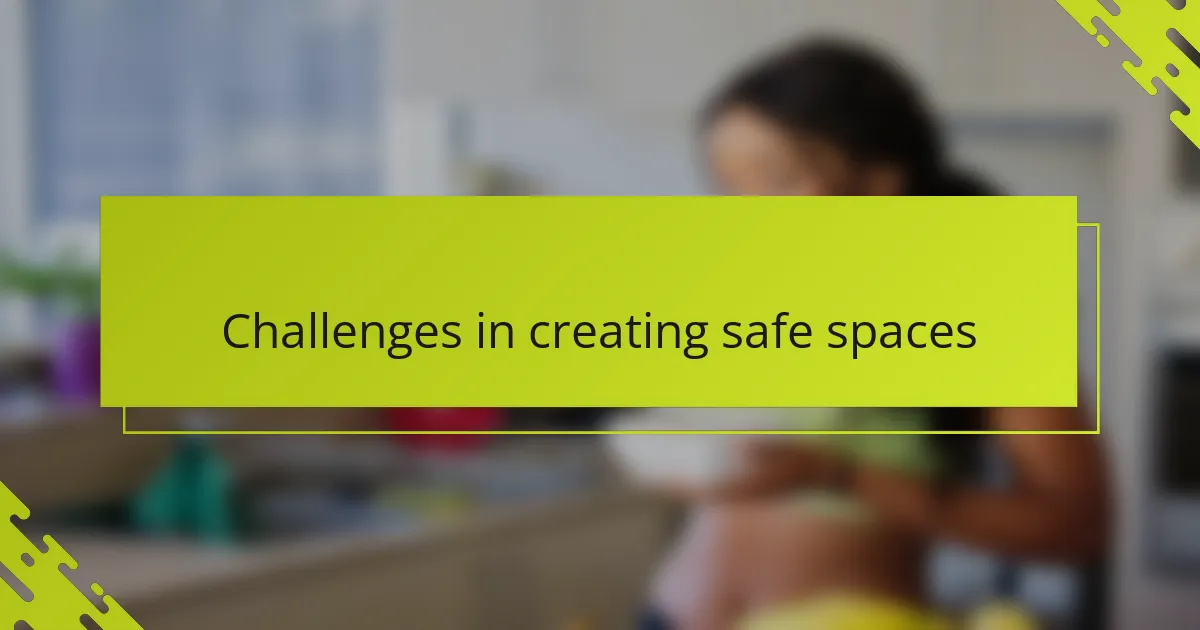
Challenges in creating safe spaces
Creating safe spaces is never without its hurdles. I’ve seen how fear—fear of misunderstanding, of being vulnerable, or even of unintentional harm—can quietly erode trust before it fully builds. How many times have I wondered if people’s past hurts make them hesitant to open up, even in spaces designed to protect them?
Another challenge is balancing openness with boundaries. In my experience, it’s tricky to create an environment welcoming enough to share deeply, yet structured enough to prevent discomfort or harm. Have you noticed how tough it can be to navigate these lines while keeping everyone’s needs in mind?
Then there’s the reality that safe spaces don’t exist in a vacuum. External societal pressures and prejudices often seep in despite our best intentions. I recall moments when outside biases infiltrated conversations, reminding me that the work to maintain safety is ongoing and requires constant vigilance.
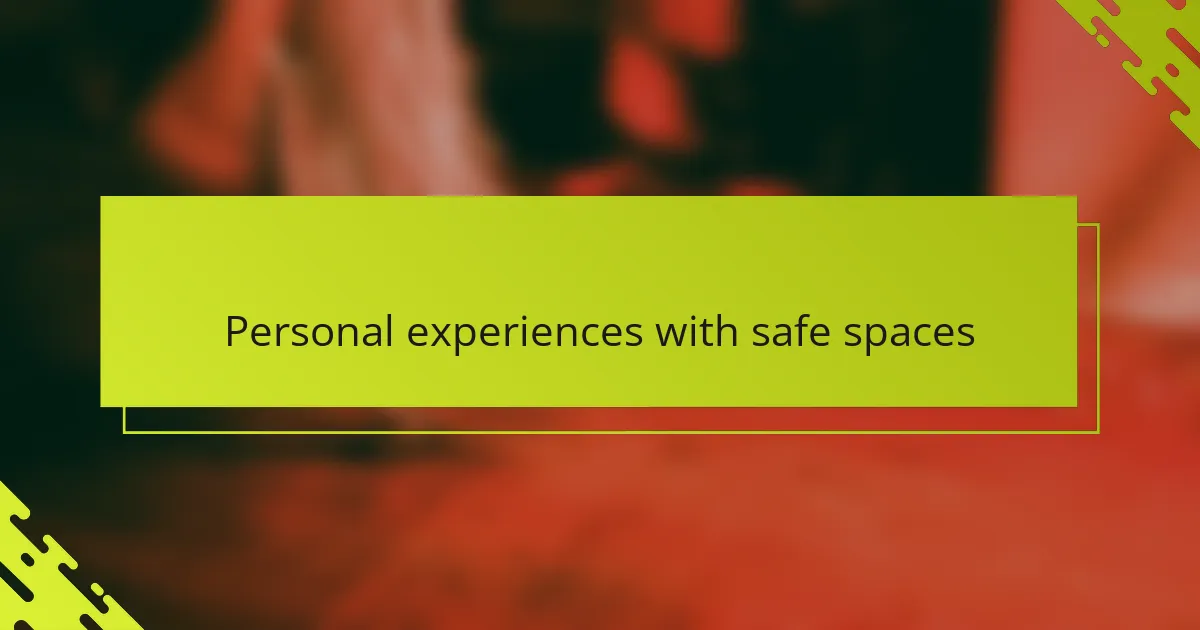
Personal experiences with safe spaces
I recall one evening at a small meetup where, for the first time in a long while, I felt truly at ease sharing parts of my story I’d kept guarded. That willingness to be vulnerable didn’t come overnight—it was a gradual trust built through countless conversations where judgment was absent, replaced instead by genuine curiosity and care. Have you ever experienced that moment when you realize the walls you’ve built are slowly dismantling?
There was also a time when I noticed how silence itself in a safe space spoke volumes—whether it was sitting together in quiet understanding or simply holding space for someone’s unspoken pain. Those moments taught me that safety isn’t always about big gestures; sometimes it’s the gentle presence that makes all the difference.
Yet, I can’t ignore how personal biases sometimes creep into even the most well-intentioned environments. I’ve felt the sting when my experiences were unintentionally dismissed or misunderstood, which made me wonder—how do we keep these spaces truly inclusive if we’re all still learning to see and respect each other fully? That question drives me to stay engaged, to listen harder, and to keep working toward spaces where everyone feels they belong.
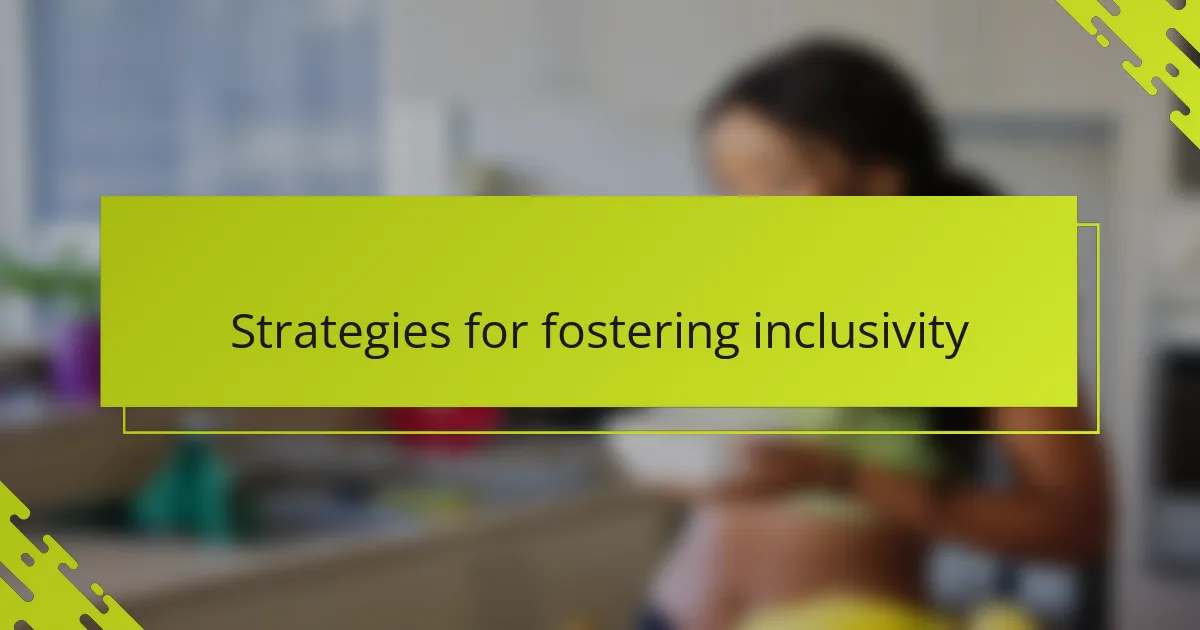
Strategies for fostering inclusivity
One strategy I’ve found essential is fostering active listening—not just hearing words, but really tuning into the emotions behind them. When someone shares, have you noticed how your full attention can instantly shift the room’s energy? That kind of presence signals respect and openness, making space for vulnerability.
Another approach is setting clear yet flexible guidelines together as a community. I’ve seen groups where everyone contributes to defining what feels safe, and it creates a shared ownership that strengthens trust. Doesn’t it feel different when rules emerge from collective care instead of being imposed from above?
Lastly, embracing ongoing education about diverse identities and experiences keeps inclusivity alive. I often remind myself—and others—that growth means being willing to confront uncomfortable questions or mistakes. How else can we deepen empathy if we don’t challenge our own assumptions continuously? From my experience, this commitment transforms not just spaces, but us as individuals.
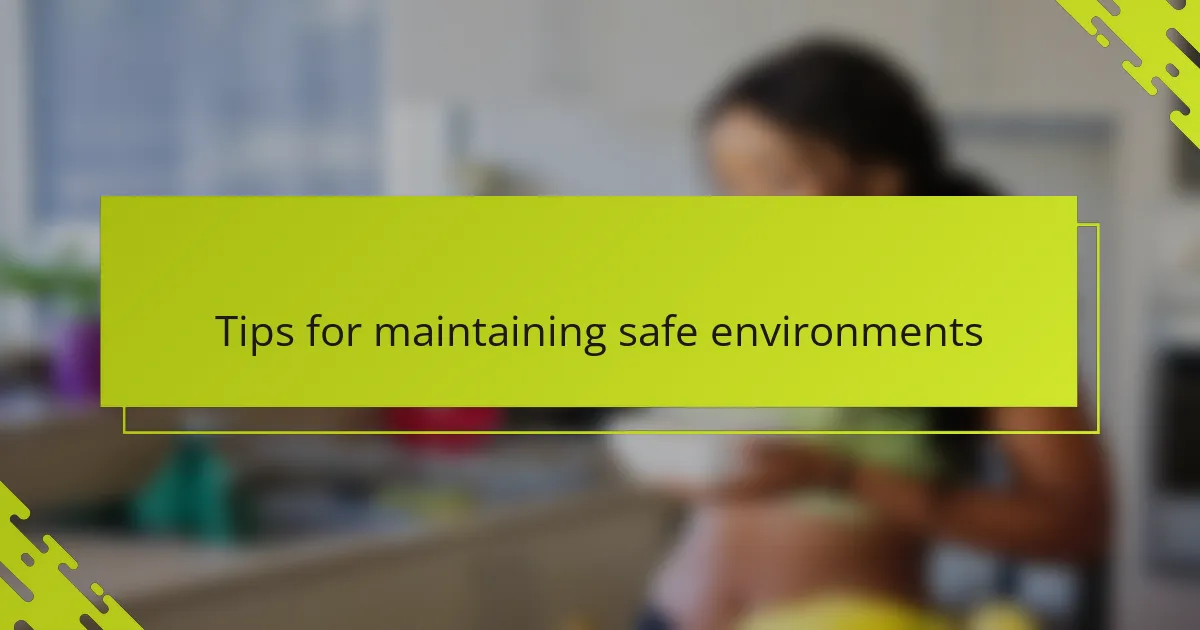
Tips for maintaining safe environments
Maintaining safe environments starts with vigilance—checking in regularly with everyone involved to make sure they still feel seen and secure. I’ve noticed that when people’s feelings are acknowledged early, small issues don’t have a chance to grow into bigger wounds. Have you ever experienced how a simple “How are you feeling here?” can change the whole mood of a space?
Clear communication is another cornerstone. In my experience, being upfront about what behaviors are welcome and what crosses the line helps prevent misunderstandings before they happen. It’s not about policing but about creating a shared understanding that everyone can rely on.
Finally, I’ve found that modeling vulnerability and accountability makes a huge difference. When leaders or community members own their mistakes openly and invite feedback, it sets a tone of trust that encourages others to do the same. Wouldn’t you agree that this kind of openness strengthens the whole community?
